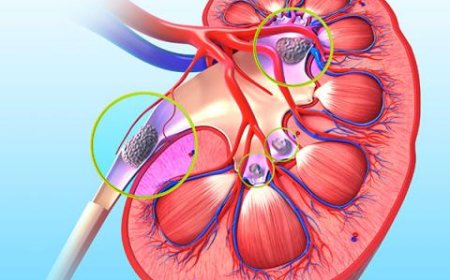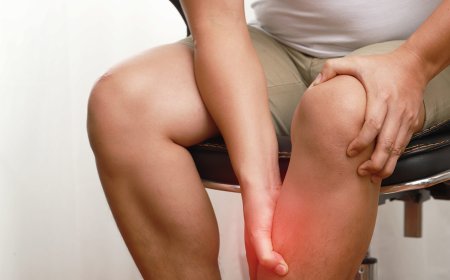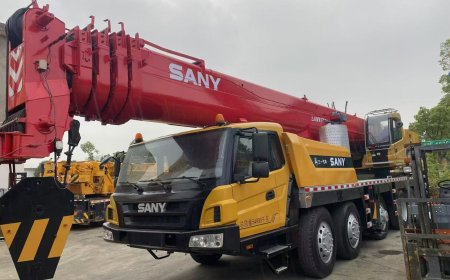How Tooling Engineering Drives Autonomous Systems
Discover how tooling engineering plays a key role in aerospace product development and the rise of intelligent autonomous systems across industries.

Why the Future of Autonomous Systems Starts With
Better Tooling Engineering
From self-driving cars to unmanned aerial vehicles, autonomous systems are changing how we move, work, and interact with the world. These machines rely on advanced sensors, software, and designbut none of it functions without the precision of well-crafted tools. As industries shift toward smarter, self-operating technologies, tooling engineering becomes a silent but essential force driving innovation. Without the right tools, even the best ideas cannot become reliable, scalable systems.
Lets explore why the success of next-generation autonomous systemsespecially in fields like aerospace product developmentdepends on a smarter approach to tooling design.
Understanding the Role of Tooling Engineering
Tooling engineering focuses on creating the tools, jigs, dies, fixtures, and molds used to manufacture parts and components. It plays a vital role in production quality, efficiency, and scalability. In the world of autonomous systems, where components must perform flawlessly in complex environments, high-precision tooling is non-negotiable.
Well-designed tools help ensure:
-
Repeatability in mass production
-
Reduced errors and waste
-
Faster assembly with minimal manual intervention
-
Accurate alignment of complex parts and electronics
As autonomous machines evolve, the demand for smarter tools grows alongside them.
Autonomous Systems Require Exceptional Precision
Autonomous systems, whether flying drones or robotic arms, rely on exact mechanical design and perfect alignment of their internal components. A minor error in production can lead to system failure or reduced performance.
Tooling engineering supports this precision by:
-
Enabling high-tolerance part manufacturing
-
Supporting automated assembly through smart fixtures
-
Allowing quality control checks at every step
-
Making room for rapid prototyping and testing
In product development, where drones and UAVs must perform in extreme conditions, even small defects can compromise safety. Better tooling design ensures those risks are minimized from the start.
Reducing Development Time Through Smart Tooling
Speed matters. Companies developing autonomous systems must balance innovation with tight timelines. Poor tooling design often leads to delays, rework, and extra costs. Smart tooling, on the other hand, accelerates every stage of development.
Key benefits include:
-
Faster prototyping with modular or adjustable tooling
-
Reduced setup time between production runs
-
Easier testing and modification of designs
-
Improved communication between design and manufacturing teams
Tooling engineers often work alongside designers during early stages ofproduct development, allowing them to spot issues before they reach the production floor. This partnership reduces rework and shortens time to market.
Enhancing Flexibility in Manufacturing
Autonomous systems often require customization for different industriesdefense, transportation, agriculture, and more. Traditional tooling setups may struggle with changing product requirements, but modern tooling engineering allows for flexibility.
Heres how:
-
Modular tools can adapt to different product specs
-
Reconfigurable jigs help build multiple variants of the same system
-
3D printing and digital simulation speed up custom tool creation
-
Real-time feedback from smart tools can guide improvements on the fly
These innovations give manufacturers the ability to pivot quickly without compromising qualityan essential feature in fast-moving sectors like aerospace.
Supporting Lightweight and Complex Materials
Autonomous machines must often be lightweight but strong. Materials like carbon fiber, aluminum alloys, and composites are common in autonomous vehicles and drones. These materials present tooling challenges due to their unique properties.
Tooling engineering addresses these challenges by:
-
Creating precision cutting and forming tools for fragile materials
-
Designing fixturing that prevents deformation during assembly
-
Reducing material waste during manufacturing
-
Integrating specialized cooling or pressure systems when needed
In product development in aerospace, where reducing weight is crucial to fuel efficiency and flight control, the right tooling design makes these materials usable at scale.
Tooling Engineering and Automation Go Hand-in-Hand
Autonomous systems are built using increasingly automated production lines. From robotic arms to machine vision systems, these environments demand tools that are compatible with automation. Tooling engineers help bridge the gap between human design and machine production.
Tooling designed for automation enables:
-
Smooth robotic handling of parts
-
Accurate sensor placement and calibration
-
Hands-free quality checks and defect detection
-
Efficient packaging and shipment preparation
As automation increases, the partnership between tooling engineering and system developers becomes more important than ever.
Real-World Impact in Aerospace Product Development
Lets take the example of a drone designed for wildfire monitoring. Its body must be aerodynamic, lightweight, and capable of carrying sensors and cameras. The design is impressivebut without precise tooling, it can't be built efficiently or consistently.
Heres where tooling engineering comes in:
-
Custom molds shape the drones composite body with minimal defects
-
Assembly jigs hold parts steady while robotic systems join them
-
Testing rigs simulate flight conditions before the drone leaves the factory
-
Inspection tools ensure every sensor and camera is perfectly aligned
Each tool is designed with performance, durability, and scalability in mind. This level of precision and integration wouldnt be possible without the early involvement of tooling experts.
Conclusion: Smarter Tools Build Smarter Systems
Autonomous systems are the futurebut their success begins long before they go live. From initial design to final production, tooling design lays the foundation for consistency, safety, and scalability. As industries demand faster development cycles and higher performance, investing in better tooling design is no longer optional.
Especially in fields like aerospace product development, where reliability and innovation go hand in hand, high-quality tools dont just support the processthey define its success. Whether you're designing the next-generation drone, delivery robot, or industrial AI platform, remember: the future of autonomy starts with the tools that build it.


































